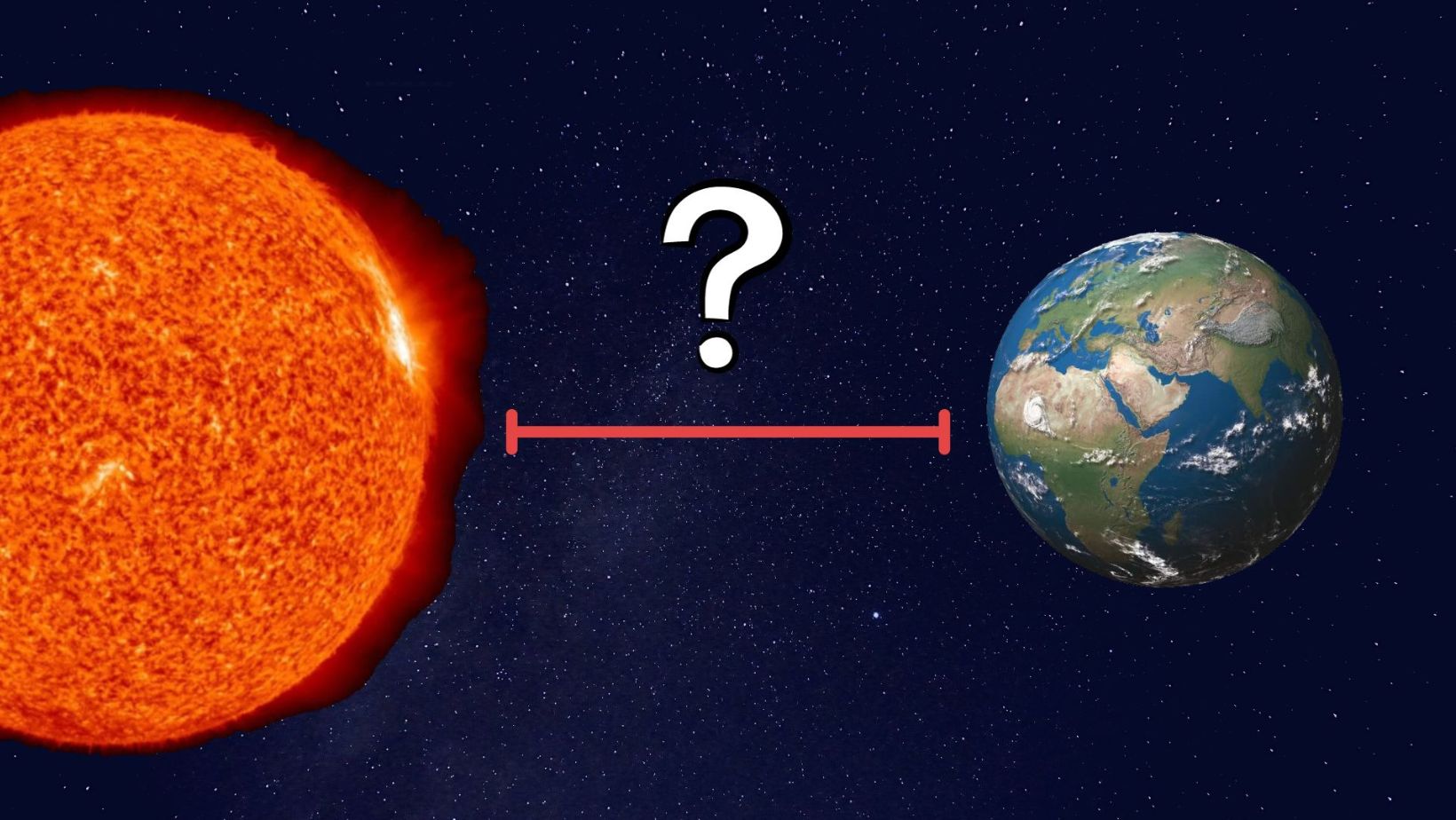Have you ever gazed up at the stars and wondered just how far away they are? Enter the concept of light years—a fascinating way to measure the vast distances in our universe. A light year is the distance light travels in one year, about 5.88 trillion miles! This unit helps astronomers make sense of the immense scale of space. Understanding light years isn’t just about numbers; it’s essential for grasping the cosmos’ mysteries. They reveal how we connect with distant galaxies, stars, and celestial phenomena. So, let’s embark on a journey through time and space to explore light years!
The Basics of Light

Light is a form of electromagnetic radiation visible to the human eye. It travels in waves and can move through empty space, unlike sound or other forms of energy that require a medium. Light is essential for life on Earth, enabling photosynthesis and allowing us to see our surroundings. It plays a crucial role in our understanding of the universe.
The speed of light is about 186,282 miles per second (299,792 kilometers per second). This incredible speed is the fastest in the universe, making light a reliable measure for cosmic distances. When astronomers say an object is a certain number of light years away, they mean it takes light that long to reach us from that object. This speed helps us gauge how vast space really is.
Understanding the speed of light also has profound implications for our perception of time and space. Light from distant stars and galaxies takes millions or even billions of years to reach Earth. So when we observe them, we are essentially looking back in time. This connection between light and distance is fundamental to astronomy, offering insights into the universe’s history and structure.
Measuring Distance in Space
Measuring distances in space can be challenging. While we often use kilometers or miles in everyday life, these units become unwieldy when dealing with cosmic distances. For example, the nearest star, Proxima Centauri, is about 4.24 light years away, which translates to roughly 25 trillion miles! Using kilometers or miles for such vast distances would result in impractically large numbers.
This is where light years come into play. They offer a more manageable way to express the immense distances between celestial objects. One light year is about 5.88 trillion miles or 9.46 trillion kilometers, making it easier to discuss the scale of the universe. Light years help astronomers communicate distance without overwhelming audiences with enormous figures.
Moreover, light years incorporate the time it takes for light to travel. This connection provides context about the vastness of space. When astronomers say a galaxy is 10 million light years away, it not only conveys distance but also indicates we are seeing that galaxy as it was 10 million years ago. This dual purpose makes light years essential in astronomy, enhancing our understanding of the universe.
How Light Years Help Us Understand the Universe
Light years are more than just a measure of distance; they reveal the intricate relationship between distance and time in the universe. When we observe distant stars or galaxies, we see them as they were in the past. For example, if a star is 1,000 light years away, the light we see today left that star 1,000 years ago. This time delay means we are essentially looking back in time.
This concept helps astronomers piece together the history of the universe. By studying light from distant objects, scientists can learn about the conditions and events that occurred millions or even billions of years ago. For instance, the light from the Andromeda Galaxy takes about 2.5 million years to reach Earth. This means we see the galaxy as it was 2.5 million years ago, providing insights into its evolution.
Understanding this relationship between distance and time is crucial for studying cosmic events, such as supernovae or the formation of galaxies. It allows astronomers to map the universe’s expansion and evolution over billions of years. Ultimately, light years help us connect with the cosmos in profound ways, turning distant celestial events into a timeline of our universe’s history.
Famous Astronomical Distances Measured in Light Years

Many notable celestial objects are measured in light years, showcasing the vastness of our universe. One of the closest stars to Earth is Proxima Centauri, located about 4.24 light years away. This distance means that the light we see from this star today left it over four years ago. Proxima Centauri is part of the Alpha Centauri star system, which intrigues astronomers and astrophysicists.
Another significant celestial object is the Andromeda Galaxy, located approximately 2.5 million light years away. This makes it the nearest spiral galaxy to our Milky Way. Observing Andromeda allows scientists to study the formation and evolution of galaxies. The distances involved help us understand the universe’s structure and dynamics.
The significance of these measurements extends beyond just distance. They allow astronomers to piece together the history of the cosmos and explore how galaxies interact. By studying light from these distant objects, scientists can learn about their composition, age, and the processes that shape them. This knowledge deepens our understanding of the universe and our place within it.
The Implications of Light Travel Time
Light travel time has significant implications for our understanding of cosmic events. When we observe distant phenomena, such as supernovae, we see them as they were in the past. For instance, if a supernova exploded 1,000 light years away, the light we now observe left that event 1,000 years ago. This time delay alters our perception of the universe’s dynamic nature.
Studying supernovae helps astronomers learn about stellar life cycles and the universe’s expansion. The famous supernova SN 1987A exploded in the Large Magellanic Cloud, about 168,000 light years from Earth. Observing its light allowed scientists to gain insights into how massive stars end their lives and release energy.
These observations also provide critical data for measuring cosmic distances and understanding the universe’s expansion. By analyzing the light curves of supernovae, astronomers can determine their brightness and distance. This information is vital for calculating how fast the universe is expanding. Thus, light travel time not only enriches our knowledge of individual events but also enhances our understanding of the cosmos as a whole.
The Expansion of the Universe and Light Years
Understanding the expansion of the universe relies heavily on the concept of redshift. Redshift occurs when light from distant objects shifts toward the red end of the spectrum, indicating they are moving away from us. This phenomenon is crucial for astronomers as it helps them determine how fast galaxies are receding. The greater the redshift, the faster a galaxy moves away, which also correlates to its distance in light years.
Light years play a key role in measuring this expansion. By analyzing the redshift of light from galaxies, astronomers can calculate their distances in light years. This information is essential for understanding the rate of expansion, known as the Hubble constant. The Hubble Space Telescope and other observatories have provided valuable data to refine these measurements.
As we learn more about the universe’s expansion, we also gain insights into its history and future. For example, studying distant galaxies reveals how the universe has evolved over billions of years. Light years enable scientists to connect cosmic distances with the time it takes for light to travel, providing a clearer picture of how our universe expands. This understanding is vital for unraveling the mysteries of cosmic evolution and fate.
Navigating Through Space and Time
The idea of faster-than-light travel has captivated scientists and science fiction enthusiasts alike. If we could travel faster than light, it would change how we navigate the universe. Current physics suggests this is impossible, as it contradicts Einstein’s theory of relativity. However, theoretical concepts like warp drives challenge our understanding of speed and distance in space.
Wormholes offer another intriguing possibility for navigating through space and time. A wormhole is a hypothetical tunnel connecting two separate points in space-time, potentially allowing for instant travel between them. If wormholes exist, they could bridge vast distances, measured in light years, making interstellar travel feasible. This concept raises questions about the nature of time and space.
While wormholes are still theoretical, they have been widely explored in physics and cosmology. If we could harness their potential, we might navigate the universe without being constrained by light years. This exploration of faster-than-light travel and wormholes fuels scientific inquiry and imagination. Understanding these concepts pushes the boundaries of our knowledge about the cosmos and our place within it.
Future of Light Year Measurement in Astronomy

Advances in technology are revolutionizing how we measure distances in space. Innovative telescopes and space missions enhance our ability to observe celestial objects with unprecedented precision. Instruments like the James Webb Space Telescope are already providing clearer images and more accurate data. This improved technology allows astronomers to refine their calculations of light years, making cosmic measurements more reliable.
Upcoming missions also promise to deepen our understanding of light years. The European Space Agency’s Gaia mission aims to create a detailed 3D map of the Milky Way. By measuring the positions and distances of over a billion stars, Gaia will improve our knowledge of star movements and galactic structure. This mission will significantly enhance how we measure distances in light years.
Moreover, future space observatories are being planned to study exoplanets and distant galaxies. These missions will focus on measuring redshifts and gathering data on the expansion of the universe. As technology continues to advance, our understanding of light years and cosmic distances will become clearer. This progress will help us unravel the mysteries of the universe and its vastness.
Conclusion: Light Years
Light years play a crucial role in astronomy, providing a manageable way to express vast cosmic distances. They help us understand the relationship between distance and time, allowing astronomers to explore the universe’s history and expansion. By measuring light years, we gain insights into celestial events, such as supernovae and the movement of galaxies. As technology advances, our ability to measure these distances will only improve. This progress encourages us to continue exploring the mysteries of space and time, deepening our understanding of the cosmos and our place within it. The universe awaits our curiosity and inquiry.
FAQs
What is a light year, and how is it calculated?
A light year is the distance light travels in one year, roughly 5.88 trillion miles (9.46 trillion kilometers). It is calculated by multiplying the speed of light (about 186,282 miles per second or 299,792 kilometers per second) by the number of seconds in a year (about 31.5 million seconds).
Can anything travel faster than the speed of light?
According to our current understanding of physics, nothing can travel faster than the speed of light in a vacuum. This principle is a cornerstone of Einstein’s theory of relativity. However, some theoretical concepts, like tachyons or warp drives, suggest potential exceptions, but they remain speculative.
How do astronomers determine the distance of objects measured in light years?
Astronomers use various methods to measure distances, such as parallax, standard candles (like supernovae), and redshift. Parallax involves observing an object from two different points in Earth’s orbit, while standard candles rely on known luminosity to estimate distance. Redshift helps determine distances based on the observed wavelength changes in light from moving objects.
Why is the study of light years important for understanding the universe’s structure?
Studying light years helps astronomers map the universe’s structure and composition. It allows them to understand the distribution of galaxies, clusters, and dark matter. This knowledge is essential for studying cosmic evolution, the universe’s expansion, and the forces that govern its behavior.
How do light years relate to the concept of time travel?
While light years provide a way to understand distances in space, they also imply a connection to time. When we observe distant objects, we see them as they were in the past due to light travel time. This concept sparks discussions about time travel, as traveling to distant locations could, in theory, allow one to witness events from the past, although practical time travel remains speculative and unproven.

